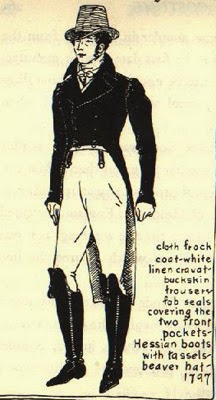The parish church of Mayfair is endowed with the romanticism of the time. Here society's elite, at least in the fictional world of a historical romance writer's imagination, are married with all ton nobles in attendance.
The church was one of the Fifty Churches project included in the Queen Anne's Act of 1711. This church was built between 1721-1724. John James was the designer.
 First the bad news. The church isn't that big. I may be wrong, but I would be surprised if the church held 250 people. I'm still looking for this information and hopefully I will have it by the time I'm ready to post this blog. The church has an open nave with aisles; the overhead galleries supported by large wooden beams. There is a great pipe organ at the back of the church, or behind you as you enter from St. George's Street. I have some great videos of the interior but they aren't loading to the blog. Sorry.
First the bad news. The church isn't that big. I may be wrong, but I would be surprised if the church held 250 people. I'm still looking for this information and hopefully I will have it by the time I'm ready to post this blog. The church has an open nave with aisles; the overhead galleries supported by large wooden beams. There is a great pipe organ at the back of the church, or behind you as you enter from St. George's Street. I have some great videos of the interior but they aren't loading to the blog. Sorry.Aside from the German Handel, who became a British citizen in 1727, the church has other international connections. The windows contain Flemish glass from Antwerp, circa 16th century. And here is a new word for you: reredos. From Wiki, a reredos is "an altarpiece, or a screen or decoration behind the altar in a church, usually depicting religious iconography or images." The reredos was designed by the Dutch-British sculptor Grinling Gibbons, one of the most acclaimed wood carvers working in England during that time. The reredos at St. George's includes scenes from the Last Supper which were painted by William Kent.
One of the famous weddings to occur at St. George's was that of future American President Teddie Roosevelt to Edith Carow in 1886.
In 1969, the church's cemetery grounds were closed, at first an issue of public health and then for area redevelopment. "11,500 further remains were taken to West Norwood Cemetery and cremated, for burial there." Wiki.
 The other St. George's at Bloomsbury was designed by Hawkesmoor and finished in 1731. Nicolas Hawkesmoor was a student of Sir Christopher Wren, the renowned architect. After the Great Fire of 1666, Wren was charged with rebuilding 52 churches within London. While Wren was credited for his architectural genius, some of the creative genius behind these churches has been attributed to Hawkesmoor.
The other St. George's at Bloomsbury was designed by Hawkesmoor and finished in 1731. Nicolas Hawkesmoor was a student of Sir Christopher Wren, the renowned architect. After the Great Fire of 1666, Wren was charged with rebuilding 52 churches within London. While Wren was credited for his architectural genius, some of the creative genius behind these churches has been attributed to Hawkesmoor.Which leads to a sharp criticism of the design of St. George's Bloomsbury. According to one book I read, Hawkesmoor used a description of Mausolus's tomb as a model for this church. Pliny was the source for this information and "if the original possessed all the faults of the copy, we can scarcely understand its having been considered one of the seven wonders of the world."
Here's a the wiki entry for this amazing site, a surprisingly durable triumph that endured through Alexander the Great and until it was destroyed by earthquakes in the 12th century.
http://en.wikipedia.org/wiki/Mausoleum_at_Halicarnassus
But back to St. George's...
The church's steeple and tower were built to the side of the main building. And my favorite sarcastic aristocrat of the time, Horace Walpole, commented, that it was a "masterstroke of absurdity, consisting of an obelisk, crowned with the statue of King George I, and hugged by royal supporters."
Right away, one can see the similarities in the churches, especially the magnificent Corinthian pillars out front. So next time you are in London, stop by these iconic churches and feel the sublime weight of history in their surroundings.
For a bit of fun, have you read any romance novels with scenes or marriages set at either of the St. George's?




